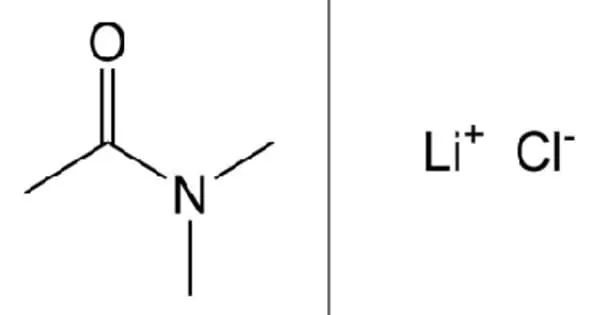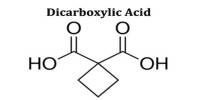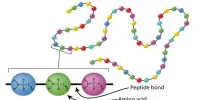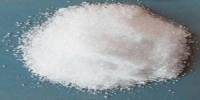Engineers at the University of Illinois Chicago have developed a solar-powered electrochemical reaction that not only uses wastewater to produce ammonia, the world’s second most abundant chemical but also achieves a solar-to-fuel efficiency that is ten times higher than any other comparable technology.
Their findings are published in Energy & Environmental Science.
“This technology and our method have great potential for allowing the on-demand synthesis of fertilizers and could have an immense impact on the agricultural and energy sectors in developed and developing countries, and on efforts to reduce greenhouse gases from fossil fuels,” said lead researcher Meenesh Singh, assistant professor of chemical engineering at the UIC College of Engineering.
Household sewage, such as bodily wastes, as well as discharge from clothes washers, dishwashers, and garbage disposals, as well as municipal wastes and storm sewer runoff, make up municipal wastewater. The majority of nitrogen in wastewater is in the form of ammonia or urea, but nitrates and nitrites are also present.
Nitrates and nitrites are oxidized forms of nitrogen that are usually connected with NPK fertilizers (nitrogen, phosphorous, and potassium).
Ammonia, which is made up of one nitrogen atom and three hydrogen atoms, is a fundamental component of fertilizers as well as a variety of industrial goods such as plastics and medications.
To create ammonia from nitrogen, current technologies necessitate vast quantities of heat, which is generated by burning fossil fuels, in order to break the tight bonds between nitrogen atoms and allow them to attach to hydrogen.
This century-old process is responsible for a significant portion of global greenhouse gas emissions, which are a major contributor to climate change.
Using wastewater nitrate means we also have to remove the contaminant from surface and groundwater. Over time, this means the process may simultaneously help correct for industrial waste and runoff water and rebalance the nitrogen cycle, particularly in rural areas which may experience economic disadvantages or bear the greatest risk from high exposure to excess nitrate.
Meenesh Singh
Singh and his colleagues previously devised an environmentally acceptable technique of producing ammonia by passing pure nitrogen gas through an electrically charged, catalyst-covered mesh screen in a water-based solution.
This reaction required very little fossil fuel energy to electrify the screen that breaks apart nitrogen atoms, but it produced more hydrogen gas (80%) than ammonia (20%).
The researchers have now built on this concept and devised a novel approach that employs nitrate, one of the most common groundwater contaminants, as a nitrogen source and sunshine to electrify the reaction. With almost no hydrogen gas side reactions, the system yields approximately 100% ammonia.
The process uses no fossil fuels and emits no carbon dioxide or other greenhouse gases, and it uses solar electricity to achieve an extraordinary solar-to-fuel efficiency, or STF, of 11%, which is 10 times greater than any other current ammonia production system (about 1% STF).
The new approach is based on a cobalt catalyst, which the researchers detail in their publication “Solar-Driven Electrochemical Synthesis of Ammonia using Nitrate with 11% Solar-to-Fuel Efficiency at Ambient Conditions,” along with the novel process.
The researchers first used computational theory to forecast which metal would work best as a catalyst. Following the discovery of cobalt using these models, the team experimented with the metal, attempting to improve its activity in the reaction in various ways.
The researchers discovered that a rough cobalt surface formed from oxidation worked best for creating a selective reaction, in which virtually all of the nitrate molecules were converted to ammonia.
“Finding an active, selective, and stable catalyst that worked in a solar-powered system is powerful proof that sustainable synthesis of ammonia at an industrial scale is possible,” Singh said.
Not only is the reaction carbon-neutral, which is excellent for the environment, but if it is developed for industrial usage, it might have an almost net-negative, restorative effect on the environment.
“Using wastewater nitrate means we also have to remove the contaminant from surface and groundwater. Over time, this means the process may simultaneously help correct for industrial waste and runoff water and rebalance the nitrogen cycle, particularly in rural areas which may experience economic disadvantages or bear the greatest risk from high exposure to excess nitrate,” Singh said.
Drinking water nitrate levels above a certain threshold have been linked to cancer, thyroid disorders, premature birth, and low birth weight.
“We are all very thrilled with this achievement, and we are not stopping here. We are hopeful that we will soon have a larger prototype with which we can test a much greater scale,” said Singh, who is already collaborating with municipal corporations, wastewater treatment centers, and others in the industry on further developing the system.
A patent for the new process has been filed by the UIC Office of Technology Management.
The co-authors of the paper are Nishithan Kani and Aditya Parajapati of UIC, Joseph Gauthier of Texas Tech University, Jane Edgington and Linsey Seitz of Northwestern University, Isha Bordawekar of Warren Township High School, Windom Shields and Mitchell Shields of Worldwide Liquid Sunshine, and Aayush Singh of Dow Inc.
















